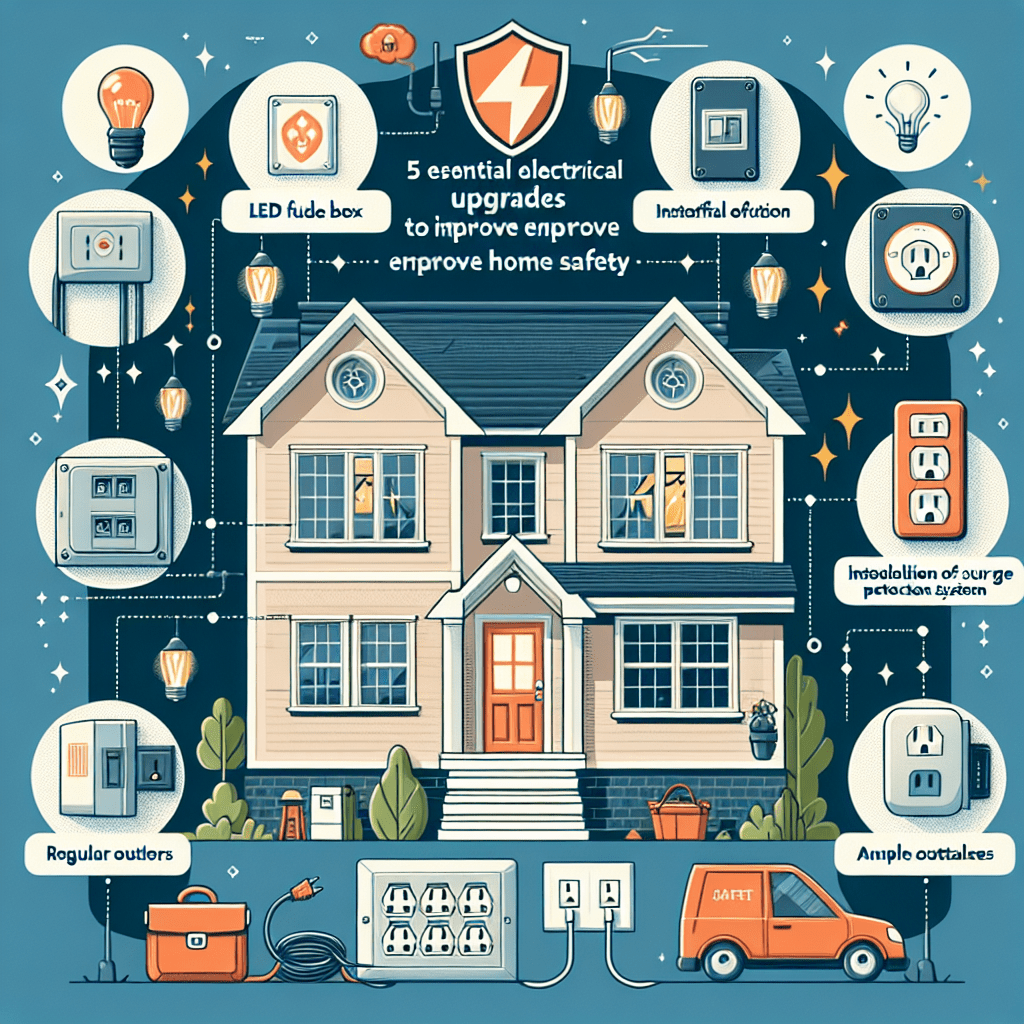Electrical upgrades are crucial for ensuring the safety of your home. Faulty wiring, outdated electrical systems, and overloaded circuits can pose serious risks such as electrical fires and electrocution. In this article, we will discuss five essential electrical upgrades that can help improve your home’s safety.
1. Upgrade Your Electrical Panel
Your electrical panel is the heart of your home’s electrical system. If you have an outdated panel with fuses or a low amperage capacity, it’s time to upgrade to a modern circuit breaker panel. Circuit breakers are more efficient in cutting off electricity in case of a short circuit or overload, reducing the risk of fire. Upgrading your panel will also ensure that your home can handle the electrical demands of modern appliances and electronics.
2. Install Ground Fault Circuit Interrupters (GFCIs)
GFCIs are essential for protecting against electrical shocks in wet areas such as bathrooms, kitchens, and outdoor outlets. These devices quickly shut off power when they detect a ground fault, preventing potential electrocution. It is recommended to install GFCIs in all areas prone to moisture to enhance the safety of your home.
3. Replace Old Wiring
Old wiring can be a significant fire hazard due to wear and tear over time. If your home has knob-and-tube wiring or aluminum wiring, consider replacing it with modern copper wiring. Copper wiring is more durable and less prone to overheating, reducing the risk of electrical fires. Additionally, updating your wiring can also improve the overall efficiency of your electrical system.
4. Upgrade to LED Lighting
Switching to LED lighting is not only energy-efficient but also safer than traditional incandescent bulbs. LED bulbs produce less heat, reducing the risk of fire hazards. They are also more durable and have a longer lifespan, saving you money on replacement costs. Upgrading to LED lighting throughout your home can improve safety while lowering your energy bills.
5. Install Surge Protectors
Power surges can damage your electrical devices and pose a risk of electrical fires. Installing surge protectors at key outlets can safeguard your electronics and appliances from voltage spikes. Whole-house surge protectors can also protect your home’s electrical system from damage caused by lightning strikes or utility fluctuations. Investing in surge protection can provide peace of mind and prevent costly electrical damage.
Conclusion
Ensuring the safety of your home is paramount, and electrical upgrades play a crucial role in preventing electrical hazards. By upgrading your electrical panel, installing GFCIs, replacing old wiring, switching to LED lighting, and installing surge protectors, you can significantly improve the safety of your home. These essential upgrades not only enhance safety but also increase the efficiency and longevity of your electrical system.
FAQs:
Q: How often should I upgrade my electrical panel?
A: It is recommended to upgrade your electrical panel every 20-30 years, or if you are experiencing frequent tripped breakers, flickering lights, or other signs of electrical issues.
Q: Can I install GFCIs myself?
A: It is recommended to hire a licensed electrician to install GFCIs to ensure they are properly installed and provide the intended protection against electrical shocks.
Q: Do LED lights really save energy?
A: Yes, LED lights are highly energy-efficient and consume significantly less electricity than traditional incandescent bulbs, resulting in lower energy bills.
Q: Are surge protectors necessary for all outlets?
A: Surge protectors are especially important for outlets where sensitive electronic devices are plugged in, such as computers, TVs, and appliances. Whole-house surge protectors are also recommended for overall protection.
TIP:
Regularly inspect your electrical system for any signs of wear or damage, such as frayed wires, overheating outlets, or buzzing sounds. Promptly addressing these issues can prevent electrical hazards and ensure the safety of your home.
#Essential #Electrical #Upgrades #Improve #Home #Safety

